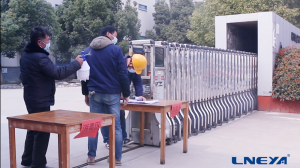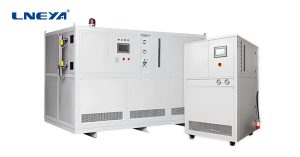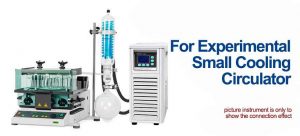Refrigerating Output of Low Temperature Cooling Circulator
The refrigerating output of low temperature cooling circulator varies with different working conditions. So, when the process calculation is carried out at the beginning, it is necessary to set an allowance for the refrigerating output of the Heiz-Kühl-Umwälzpumpe to avoid the condition that the refrigerating output is not enough.
The refrigerating output of the low temperature cooling circulator is closely related to the compressor, evaporator, condenser and expansion valve. The refrigerating output of the compressor is related to the evaporation temperature and the condensation temperature, which decreases with the decrease of the evaporation temperature or the increase of the condensation temperature. The refrigerating output of the evaporator is determined not only by the difference value between the temperature of the reservoir and the evaporation temperature but by the superheat degree at the outlet of the refrigerant (dry) or the level of liquid level (full liquid). When the reservoir temperature is constant, the refrigerating output of the evaporator increases with the decrease of the evaporation temperature. The refrigerating output of the condenser can be figured out from the condenser refrigerating curve. When the cooling water yield or condensation temperature drops, the refrigerating output decreases. In addition, when the cooling water yield decreases and the cooling water temperature rises, the refrigerating output also decreases. The refrigerating output of the expansion valve is related to the pressure difference between the inlet and outlet of the valve and the refrigerant in this working condition. So when the condensing temperature drops, the refrigerating output decreases, and the refrigerating output decreases when the evaporation pressure is too high or too low.
From this, it can be seen that the refrigerating output of the low temperature cooling circulator is related to the heat load, the area of evaporation, the area of heat transfer, and the area of the compressor. Changes in any of the factors will affect the refrigerating output.
The heat transfer area of low temperature cooling circulator mainly refers to the evaporation area of the evaporator, and the change of heat transfer area mainly refers to the change of evaporation area. The effect of evaporation area increase and decrease on evaporation temperature is basically similar to the increase and decrease of heat load on evaporation temperature. When the evaporation area increases, the evaporation temperature will increase; when the evaporation area decreases, the evaporation temperature will decrease. When the heat load of the low temperature cooling circulator increases and the other conditions are constant, the evaporation temperature will rise, the pressure of the low pressure will rise and the superheat degree of the suction will increase. When the energy of the refrigeration compressor is increased, the suction volume of the compressor increases correspondingly, under the condition that other things are equal, the high pressure will rise, the low pressure decreases, and the evaporation temperature will decrease. Adjusting the evaporation pressure of low temperature cooling circulator can be realized by changing the opening degree of the throttle valve or adjusting the gas flow rate of the refrigeration compressor. If the throttle valve is turned down, the refrigerant circulation is reduced, the evaporation in the evaporator is reduced accordingly, and the evaporation pressure is reduced accordingly. Conversely, if the valve is turned up, the evaporation pressure will increase correspondingly.
Therefore, the adjustment of refrigerating output of the low temperature cooling circulator can be done flexibly, that is, all lined with one another, we need to pay more attention to the operation.
Verwandte Empfehlungen
-
LNEYA kämpft gegen "NCP" und nimmt die Produktion sicher wieder auf
2157Der NKP wirft einen Schleier über das neue Jahr 2020, aber der Moment, in dem sich alles erholt, wird nie ausbleiben. Gegenwärtig stehen viele Unternehmen im ganzen Land unter großem Druck und tragen große Verantwortung. Doch LNEYA ...
Details anzeigen -
Beschreibung des Stromverbrauchs in der Großkälteanlage LNEYA
1968In the process of operation, the cooling capacity and working conditions will affect the power consumption of the entire large refrigeration unit, but in order to avoid unnecessary power consumption, we need to understand the other power consumpti...
Details anzeigen -
Ultra-low temperature freezing manufacturer analyzes the cause of blockage in refrigeration system
2007With the continuous development of technology, ultra-low temperature refrigeration technology is also constantly developing, and manufacturers are also increasing. Of course, the technology of different manufacturers is different. Once the refrige...
Details anzeigen -
New product recommendation-small desktop circulating chiller FL-800N
1794In recent years, with the rapid developmentof the pharmaceutical industry, the pharmaceutical equipment industry has alsodeveloped rapidly. To this end, Lneya launched the small desktop circulatingchiller FL-800N, which is welcomed by the marke...
Details anzeigen
 LNEYA Industriekühler Hersteller Lieferant
LNEYA Industriekühler Hersteller Lieferant














